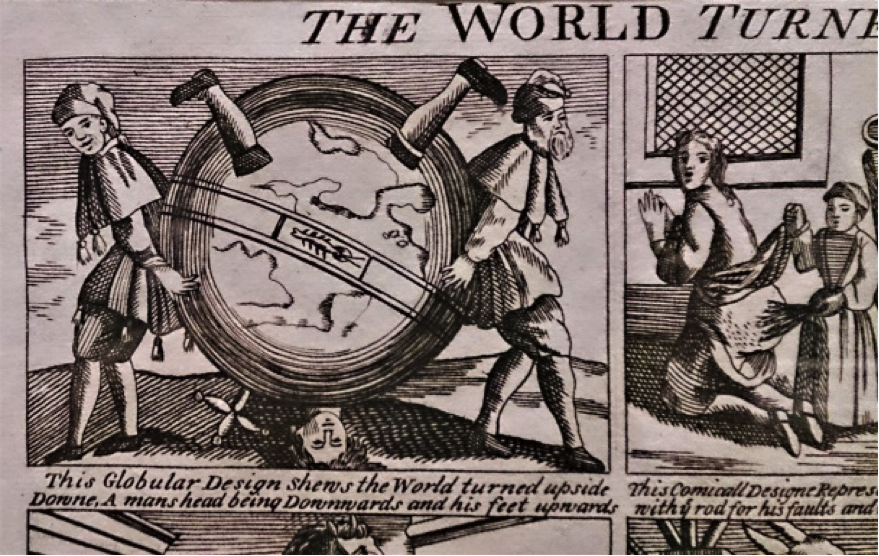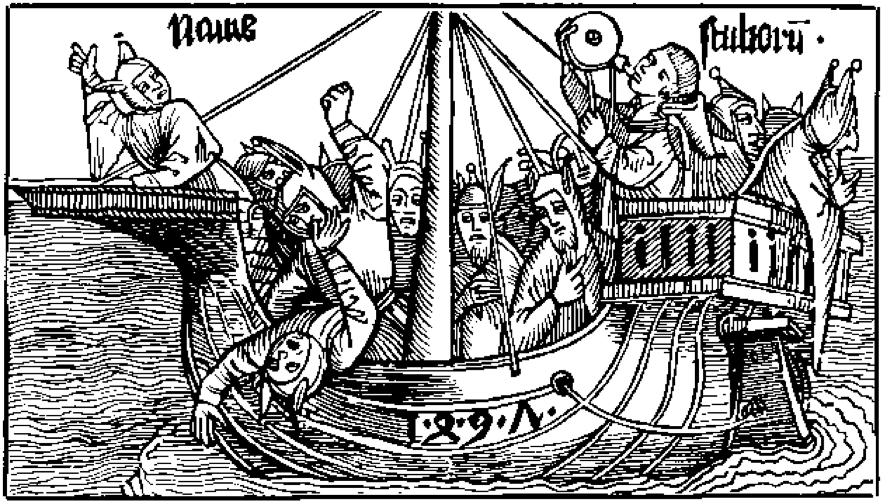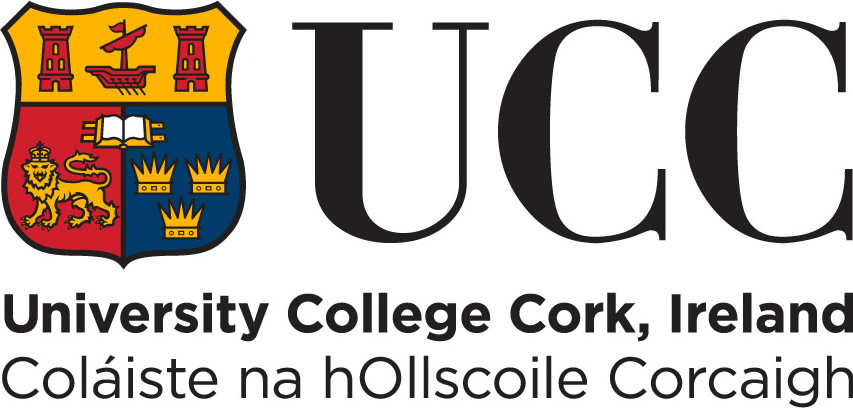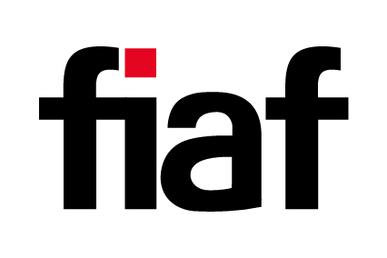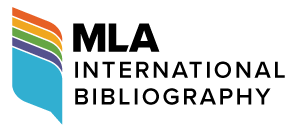The Academy and the Industry
Foreword
Rod Stoneman
The following polemical and fallible perspectives on universities and on the television and film industries derive from a personal trajectory through immersive experiences in different occupations—I worked for ten years at Channel 4, followed by a decade in the Irish Film Board and then ten years in Huston School of Film & Digital Media (which is part of the National University of Ireland, Galway). Each role took place during the initial phase of these very different entities—formative stages which involved rethinking mistakes, making modifications and facilitating development… [1]
1. Academia
It is, perhaps, instructive to begin by examining the very terms of the polarity between film academia and film industry in their pre-existent categorical separations. By now it may even be possible to talk of the “academic industry”: the proliferation of higher education and the increasing degree of standardisation of its activities have taken the contemporary tertiary domain to an industrialised scale of output and productivity. “National sector standards” encourages the alignment of course descriptors and assessment parameters; the defined scrutiny of external examiners endeavours to ensure convergence and achieve consistency and fairness. Peer-reviewed articles in overly niche and largely obscure journals are part of the uniform arrangement of academic publication which, alongside the persistently sterile, formulaic format of conferences, aim to deliver the numerically regulated academic performance demanded by modern managements. An academic will perform “data capture” and build a forty-page curriculum vitae in order to propose themselves for advancement while the gender pay and promotions gap has not narrowed significantly in recent decades. [2] Promotion is predicated on predefined and countable forms of “deliverables”: a cumulative list of hours of teaching, supervision, research publications and external grants must be achieved at each elevation of employment. [3]
The tyranny of metrics is dysfunctional and often provides distorted knowledge—it exerts constant pressure as though counting everything will lead to better performance or policy choices (Collini, “Kept Alive”). Numerical management and performance indicators have other deleterious effects—lecturers “teach to the test” and students expect to achieve the measurement. [4] Marketisation treats students as consumers with universities as businesses competing for their custom. There is an implacable logic originating from the commodity economy in which we live, which moves outwards to structure all areas of cultural and social interaction—and why wouldn’t knowledge also be understood as a commodity to be bought and sold?
The ubiquitous deployment of the term “scholarship” is symptomatic—in its constricted and anachronistic connotations there is a dominance of a disingenuous mode of academic writing which effaces the first-person pronoun, and thus the perspective and selectivity of the writer. [5] Frequently the forms are justified through an empirical focus, which may yield insight, but disguise the fetish impulse behind the accumulation of data sets. The formulae of academic texts are protected by its references and footnotes—once referred to as the “Caddis Fly Effect”: “The items are not psychically transformed, but appropriated as a shield, rather as the caddis fly larva assembles a shell from the detritus of a pond within which it effects its metamorphosis from larva to adult” (Reason). [6]The historical frame for academic activities in Europe is one in which over the last thirty years a protracted expansion has multiplied the proportion of the population moving through higher education, a transition from an “elite” to a “mass” system. This has taken place without any commensurate increase in resources—which affects every level of the student experience.
Many parts of the world are moving toward the North American financial models in which “recruiting universities” bid for fee-paying students. Although fees are currently low in Ireland and capped in England, US universities can charge $40,000–$60,000 per year for a course, this scale of a potential loan presumably encourages a disproportionate presence for the children of the super-rich? An enlightening insight into the thinking behind the move for students to “pay for their own education” by charging significant fees occurred in the winter of 1996–1997. Students in Burkina Faso, West Africa embarked on a bitter three-month strike to demand proper funding of their education system and braved the violence of the security forces in that country. A visiting American academic noted that his sympathy for the students was not shared by officials at the US embassy, who “suggested that students lacked sufficient maturity to accept the fact that the era of government-subsidised education is now over, an antiquated relic of the Cold War period” (Wise).
The fall of the Berlin Wall and the demise of “actually existing socialism” has unleashed the most virulent forms of neoliberalism including the monetisation and marketisation of education and health. As Stefan Collini writes: “Marketisation hollows out institutions from the inside, so that they become unable to conceptualise their own activities in terms other than those of the dominant economic dogma” (“Diary”). Financial structures have their effect on ideas and mentalities and in time connect with moves to instrumentalise aspects of film and media studies and other humanities courses, part of an imperative to take the educational experience of young people from explorations of interdisciplinary ideas towards a focus on fixed areas of employment—whereby closed training replaces open education. Cultivating students to think about employability and “professional practice” is not intrinsically wrong, it is a question of on what terms, and at what age and stage this should be introduced.
Despite changes wrought by recent management policies in tertiary education, universities and colleges continue to offer the flexibility and space for the development of reflection and understanding for both lecturer and student. Like an anthropologist taking time to write up field notes, the university encourages detachment and reflection for those that have worked directly in the sectors of production. Reflexivity can make a contribution to the public discourse that surrounds the media; creative and critical analysis has the potential to feed into politics, policy and even practice. A culture of open discussion and self-critical argument is central to the project of developing imaginative and transformatory cultural forms and renewing “old” agendas.
Radical spaces within the structures encourage the process whereby higher education can engage again with the wider public sphere, the arts are a space to project how we understand the future: imaginative speculation like “The Plea for Products of High Necessity” issued from Guadeloupe in 2009 describes humanity’s struggle to replace the “prosaic” with the “poetic” and is inspiring and resolute in its reaffirmation of the utopian (Breleur et al.). On a more modest scale, “A May Day Manifesto”, written in Galway at the outbreak of the Irish financial crisis, addressed possible futures after the self-destruction of free market economics (Stoneman, “May Day Manifesto”). These and other examples indicate that universities can still provide the necessary context for lively debate to address a society in crisis.Other institutionally approved versions of academic focus are more introverted. Demarcation and competition works to achieve marginalisation and contribute towards the academic framework of separation and isolation. Peer review, promotion and other gatekeeping processes can lead towards further standardisation around a very limited version of what constitutes higher education.
However, there may be some indications of movement and grounds for optimism as responses at various levels of higher education structures intercept and contest the managerial shifts that are taking place. Lecturers are well aware of the machinery of control and students, already engaged in environmental struggles, see these pedagogic interactions taking place in the context of complex social change. In the UK they are also responding to the politics of student debt, and the growing and entirely justified anger towards the huge salaries of many Vice Chancellors (and senior managers) while students and part-time academic staff are forced to go to food banks (Adams). In 2018 there was widespread student solidarity and a better supported strike in response to a clumsy attempt to lessen staff pensions than British academia had ever seen before which tapped into this wellspring of resentment. Youth is a point of departure and is developing a perspective which can sustain an intentional naivety and ask—does it have to be like this?
Figure 1: Academia—so much to unlearn. Photo Rod Stoneman, Ulster Museum, Belfast.
2. The IndustryThe casual use of the term “the industry” often implies a monolithic domain with consistent and connected attributes—this assumption hides the extreme diversity of different kinds of work in different entities, and different places in different times. The enormous divergence between companies and practices needs delineation—there are significant and subtle differences within and between film and television activities. European cinema offers some resistance to the Hollywood impulse exploiting recapitulation to the full in the wish to repeat, to utilise formulas to predict and to maximise commercial returns. Standardisation happens in different ways and at different levels with industries which embrace dissimilar relations with broad generic conventions. [7] A continued and unresolved tension exists in non-American film and television between the centripetal tendencies that draw audiovisual production to reproduce itself in formulaic configurations and a centrifugal dynamic which encourages explorations of cultural difference.
Some parts of the mainstream industry tend to reach for the term “professionalism” for self-reinforcement and to effect forms of exclusion. An example occurred in the early 1980s when the advent of Channel 4, as the first publisher broadcaster, helped develop the independent sector in Britain. This triggered specific defensive, derisive comments such as “the pool of talent is limited […] anyone with talent is already working in the BBC or ITV”. [8] Dismissive remarks such as these were aimed at the nascent independent sector and at those of us working at the new channel, betraying the complacency of an established industry. An equivalent self-righteousness had been expressed by Aubrey Singer, the Controller of BBC2 at the time, when he attended a screening of Bristol independent films at the end of the 1970s, notoriously remarking: “I’m not having your films on my television”.
Channel 4’s original remit “to innovate in the form and content of programmes” and to extend the range available to British television audiences was an important counteraction to these attitudes. It seemed to me at the time that the word “professional” could be redefined simply towards “doing something seriously and properly”. Rethinking the term could also denote sustained and imaginative curiosity, rather than using the word to achieve narrow thinking and exclusion from employment in an industrial cartel. [9]
One correlative index of the process of self-definition in Channel 4 over the years was the way in which an initial, brave tendency to draw in editorial people from outside television has been gradually eroded. [10] Recruitment after the initial period became increasingly oriented towards employing other television “professionals” with prealigned and compatible ideologies. The original incorporation of someone like myself from the London Filmmakers’ Co-op end of the Independent Filmmakers’ Association into Channel 4 seems rather less likely now. Any examination in terms of class, gender and race still raises questions about the narrow selectivity of those who end up in television. It also has to be said that, whatever the identity people initially bring to television, the work and its context eventually have an effect: gradual implicit institutional repositioning.
Complacency is not only confined to large vertically integrated broadcasters—small and entrepreneurial independent companies may exhibit the same resistance to change. At a recent conference when a panel of independents were asked what they looked for from graduating students emanating from colleges and film schools they replied unanimously saying that they wished the students could be more “industry-ready”. [11] Independent companies should hope for fresh stimulation and renewal from new generations of trainees—docility and conformity will not bring innovative ideas or new thinking to existent programme making. Hopefully, the space offered by a college course encourages exploration and experimentation, although this is a space of growing contention, given the pressures to drive students, as a course leader on a BSc on Film and Television Production in Northern England recently suggested, towards “an increasingly disciplined, industrially-focused creativity”, the term “creativity” in this context can easily lead to the manufacture of entertainment tailored to the needs of commercialised consumption practices.
Unpaid or underpaid internships are also related to the culture of feepaying higher education. This offers a form of economic exploitation where young people (whose parents can afford to pay) can “learn the trade” in situ. The Precarious Workers Brigade has campaigned in the cultural sector to arrange the terms of collaboration on a clearer and more equitable basis; the pressures on the “precariat” are clear in a recent American film, Call Me Intern (2019).
There were different aesthetic and political motives that took me to work in British television in the 1980s: the possibility of commissioning and screening a wider range of direct speech at Channel 4 brought experimental work, personal and political documentaries, feature films from Africa, Asia and Latin America, intellectual debate, and the first LGBT programming, different versions of film and television to wider publics. This project worked better than anyone inside or outside the Channel had expected—it was well-received critically and there were substantial audiences that found and appreciated the expanded diversity of programming. However, since that epoch, public service television has reduced bandwidth under market pressure and closed down genuine pluralism in the name of choice. [12]
When I moved from the television industry in England to the film industry in Ireland as CEO of the Irish Film Board in 1993 in my mind I was bringing a version of the “radical pluralism” I had learned from Channel 4 in Britain with me in the attempt to further develop a national film industry with state support. The issues of “professionalism” and exclusion arose less within the renewal and extension of the Irish industry although the state broadcaster clearly found it difficult to connect with the exponential growth of new film activities with greater diversity and independence. I argued at the time that the two domains were inextricable: the specifics of separate traditions in cinema and television, in documentary as well as fiction film, did not obscure how cinema lives in, on and through television.
In Ireland the structural questions of scale immediately came into focus—the advantages of interconnectedness coexist with the limitations of a small nation-state. Definable benefits sit alongside specific disadvantages arising in the attempt to generate sustainable levels of film activity in relation to a country of about three-and-a-half million (or an island of five million, depending on how one draws the boundaries).
I argued for achieving a “judicious equilibrium” between culture and commerce (a facile and Manichean dichotomy anyway) for the industry with the hope that it would be difficult to argue with such an overtly reasonable proposition. The Film Board’s annual report stated: “We intend to encourage bravery and embrace creative risk. Paradoxically, in cinema, the further you push artistically the more genuinely commercial you can be” (Stoneman, Irish Film Board Review). Whatever contestation took place to assert a balanced position in the discursive terrain, a gradual and inexorable shift took place at an economic level to prioritise monetary motives for the state support of film. There were persistent indications that the tax relief schemes encouraged a mercantile mentality, avarice and, sporadically, venality.
There was little input from academia or public impact from intellectual debate in the struggle to maintain that sensible balance between the various forces in the sector. Apart from Film Board subsidies (called “loans”) the state aid available through tax relief gradually encouraged financial rather than creative producers and drew focus from the “main game” of indigenous production to enable incoming international television and feature films. Many of the larger scale Irish production companies have become financial shells, preoccupied with facilitating tax incentives for foreign production entities, producing low-quality television entertainment.If Higher Education is to be the space for effective critical thought and action, educational processes should bring sufficient complexity and precision to the critique of dominant media structures to make it clear that they are not as monolithic as they might appear. This approach should include an ethical or political dimension encouraging young people entering the film industry from outside to take a moral view or a principled stand when the occasion demands. The key point in trying to prepare new generations for paid employment is the sense that there is always room for the intricate interplay of social motives and new ideas that can short-circuit market effects within these occupations. My experience of industrial television and cinema was marked by the discovery that there are other kindred and sympathetic spirits interested in producing innovative and progressive work and getting it to an audience.
Today, Channel 4 reiterated its commitment to making “entertaining, mischievous and innovative shows about the big issues and arguments in Britain today” when Ian Katz, the present Director of Programmes at the Channel, launching the 2019 slate of major new commissions asserted that: “At a time when the room for civilised public debate, for asking the most difficult questions, often seems to be contracting, I hope we are making space for the arguments and issues that others won’t” (“Ian Katz”).
Meanwhile Naked Attraction, a nude version of Blind Date, is now in its fourth series on the Channel; it encourages male scopophilia hiding disingenuously behind spurious science statistics and a Blind Date format, offering alienated and competitive versions of human relations based on physical characteristics. Talking about “body positivity” in a mini cattle market does not make sense—it is an example of Channel 4 going for the young audience with sleazy programme making and dressing it up as having a greater purpose.
But contradictory examples from most broadcasters point towards the occasional, intermittent spaces for creative, intelligent work even amongst the most aggressively commercialised sectors. The institutional mechanisms and governmental involvements that drive the convergence of state higher education do not operate in this domain. Diversity can be found in the independent sector and even within the structures of vertically integrated broadcasters. Alongside the route of traditional transmission artisanal filmmakers have the means to make films and programmes that can reach audiences via digital systems; and on-line streaming obviously increases distribution potential. Without validating or normalising precarity, new work models should allow spaces for mobility and flexibility, in full-time work as well as for freelancers. In espousing a still exemplary range of film-making practices and concerns, Derek Jarman’s example from cinema and television of a previous epoch is even more relevant now. He carried out a wide range of film-making practices: shooting The Tempest (1979) with a medium-size crew on 35mm when a budget was available, but also working on a no-budget artisanal basis, making A Journey to Avebury (1973) or The Garden (1990) on Super 8 with friends at the weekend, eventually realising an extraordinary television event like Blue (1993) transmitting voices and sounds for eighty minutes over a television screen of pure colour (Yves Klein IKB–International Klein Blue). His filmmaking refuted the market in a very direct way—the Channel removed advertising breaks from the 10 p.m. transmission and lost substantial income. [13]
Figure 2: The Industry—led by the market… (The Ship of Fools, Albrecht Dürer, 1494).
3. Education Changes Industry and Vice Versa
The interface of academia and industry, education and production sectors clearly manifests potential to generate productive interaction and movement. The introduction of forms of practice-based research, sometimes undertaken by refugees from the industry, and its relation to the expanding field and adjacent interface of Production Studies is discussed elsewhere in this edition of Alphaville: a review of Screen Production Research. The establishment of the novel and unsettled form of practice-based PhDs is an important component of interaction with industry—they are ambitious projects and should involve those with experience of filmmaking in their construction. [14] Audiovisual practice has the prospect of entering and changing more than film studies, it can develop valuable work in other humanities subjects and their educational processes. In this epoch of proliferation, the crucial difference between information and knowledge is that the latter has been subject to selection, analysis and structure, but such analysis can be performed in many ways, including through images and sounds. Every teaching space will draw in and act out the contention and contradiction of the surrounding society that envelops it.
Film schools have historically focused on the cultivation of the filmmaker as a cultural activist, artist, or intellectual—fostering creativity and innovation. Educating Film-makers written with Duncan Petrie and published in 2014, tried to counter the narrower approach that has emerged with film courses placing a new emphasis on technical training for the industry. Arguments for a more imaginative engagement and understanding of the broader social importance of film and television—suggesting that critical analysis and production should be connected—continue.
At its best, independent cinema can draw upon a particular cultural fertility. There is a depth of history and richness that comes from generations of imaginations coming to terms with a particular place and set of circumstances. This strength is based on the specific effects of a network of a myriad of smaller scale independent production operations thrown erratically across the continents. Attempts to conglomerate the production structures within large-scale organisations or studios reduce the possibilities of multiplicity. [15]The role of education is to be an agent of change—bringing forward critical practitioners familiar with the structures, equipped with the skills to deploy in work within existent organisations and companies but also able to act autonomously having learnt to create forms of social- and self-expression. Individual and collaborative work contributes to the invisible small-scale activities in local interactions. The implications of the availability of cheaper filmmaking technology and wider participation in production and fabrication can only be constructive. Circulating within communities of interest, and between linked groups on social media, it has become suitably insubordinate to take pleasure in producing and distributing something outside of mainstream circuits. [16]
Involvement in early Channel 4 was clearly an optimistic and formative moment for me, it was an incursion into mainstream television by more imaginative, more politically responsive and aesthetically daring forms of programme making. Although it seemed not go far enough or fast enough at the time, the project of taking radical and “difficult” work to a wider audience met with some degree of success, and in the ten years I was there our department expanded exponentially in budgets and inhabiting accessible spaces in the schedule. But equally, clearly these efforts were set back and then swept away by the ensuing political and cultural climate changes in British broadcasting, and this undoubtedly also informs my perspective.
It is necessary to be tenacious in the struggle against consensus, majority opinion. To come up underneath conformity and existing ways of thinking in order to shift them a little, to unstick, shake up, introduce doubt. Precarious resourcefulness can survive even in the further reaches of institutionalised or commercialised production. The humorous détournement of advertisements, trailers or news pieces alleviates the repetitive formulae of mainstream versions.
In both academia and the industry progressive work connects with forms of dissent re-emerging in the social terrain. [17] It may be diminished and uneven, but there will still be significant scope for the renewal of innovative film and television making: imaginatively, politically and formally in whatever institutional spaces prevail. The most likely scenario is one in which transformation is uneven and diverse, continually modified by local conditions, local demands, expectations, resistances and compromises, the future still bearing the residual traces of the way it always was.
Despite pessimism and resignation, nothing prevents forms of critical knowledge and imagination, elaborated in educational processes, developing to the extent that they can contribute to production and counter the pervasion of dominant representations.
4. Coda
Given my specific trajectory, at a point in time when Channel 4 has lost its way, when Irish cinema is characterised by production companies chasing tax relief with an excessive and insatiable desire for financial accumulation, and when universities continue to descend into management-led marketisation, one could say that my investments of time and aspiration have been wasted. But there is no alternative to finding the optimism that sustains the possibility of radical transformation. There is still the delight of days, the redress of irony and analysis, the underlying expectation that decline and disaster leads to resistance and regeneration.
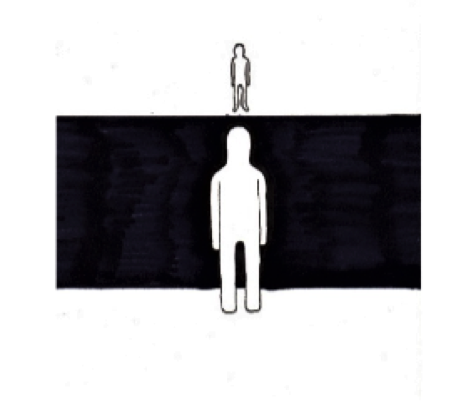
Figure 3: The chance of change… (Tom Son, 2014).
Notes
[1] More extensive accounts of the time in Channel 4 can be found in Stoneman, “Sins of Commission” and “Sins of Commission II”.[2] The National University of Ireland, Galway has drawn attention to itself with the exposure of clear inequities in gender promotion and hierarchy within its structures, but this issue persists in most universities.
[3] According to one recent account, during a promotions round at a certain UK university, the VC sat at the table with an electronic calculator in his hand, adding up the total research income each applicant had “captured” in the preceding five years before he would agree to their promotion.
[4] One can sometimes hear the unstated demand “But I paid for a better grade…”, which was literally enacted by the Oxford university student who took legal action as he had not been awarded a 2.1 or a First (Kentish).
[5] Martin McLoone explains and almost apologises for the autobiographical dimension of his quixotic Foreword to Ireland And Cinema (vii).
[6] David Reason is a lecturer in psychoanalysis at the University of Kent at Canterbury.
[7] If you view a Hollywood film there is a sense that it will operate and deliver its narrative pleasures within a narrow band of expectations. But if you see a new Swedish or English or African (or indeed American independent) film you must be prepared for the marvellous or the dreadful, and everything in between.
[8] A conversation reported by Liz Forgan at a gathering of Channel 4 commissioning editors on 31 January 2019.
[9] Roland Barthes suggested that the division between professional and amateur, with pejorative connotations for the latter category of endeavour, should be reconsidered. Suggesting that the amateur is not a consumer—not concerned with the image of themselves and challenges the productive function which has been reified by commercial circuits… (Grain of the Voice 217, 240; Roland Barthes 52).
[10] Including Liz Forgan, who had been editor of the Women’s Page at The Guardian, and Naomi Sargant, who came from the Open University (Isaacs, Storm Over Four 38; Look Me in the Eye).
[11] New Directions in Film and Television Production Studies. The University of the West of England, Watershed, Bristol, 14–15 Apr. 2015.
[12] The contribution of the Independent Film and Video Department to the Channel’s endeavour seems to have been erased from most existent accounts of the early years of the station.
[13] The only other example I can recall of Channel 4 setting aside advertising revenue was Claude Lanzmann’s Shoah (1985).
[14] The relationship between a (shorter) thesis and substantial piece of filmmaking is the productive centre of this enterprise; the supervisory team should include those with experience of both academic work and practice.
[15] These arguments are given extended space in an article I wrote twenty years ago, also republished in Kinema in 2000 (“Under the Shadow of Hollywood”).
[16] See the discussion of “dark matter” by Gregory Sholette.
[17] Perry Anderson offers a materialist analysis of the current conjuncture in a 2017 article.
Acknowledgment
Thanks to Des O’Rawe and Adam Stoneman for comments on the draft and to Otto Stoneman for artwork.
References
1. Adams, Richard. “Vice-Chancellors Paid £500,000 or More at Six Universities in England.” The Guardian, 12 Feb. 2019, www.theguardian.com/education/2019/feb/12/vice-chancellors-pay-universities-england-2017-18.
2. Anderson, Perry. “Why the System Will Still Win.” Le Monde Diplomatique, Mar. 2017, mondediplo.com/2017/03/02brexit
3. Batty, Craig, and Susan Kerrigan, editors. Screen Production Research: Creative Practice as a Mode of Enquiry. Springer, 2017, DOI: https://doi.org/10.1007/978-3-319-62837-0_1
4. Barthes, Roland. Roland Barthes by Roland Barthes. Translated by Richard Howard, Hill and Wang, 1977.
---. The Grain of the Voice: Interviews 1962–1980. Translated by Linda Coverdale, Jonathan Cape, 1985.5. Blind Date. LWT,1985–2003; So Television and Stellify Media, 2007–.
6. Blue. Directed by Derek Jarman, Basilisk Communications, 1993.
7. Breleur, Ernest, et al. “A Plea for ‘Products of High Necessity’.” L’Humanité in English, translated by Isabelle Métral, 5 Mar. 2009, www.humaniteinenglish.com/spip.php?article1163
8. Call Me Intern. Directed by Leo David Hyde and Natalie Berger, Collective Biévre, 2019, www.callmeintern.com9. Collini, Stefan. “Diary.” London Review of Books, 10 May 2018, pp. 38–39, www.lrb.co.uk/v40/n09/stefan-collini/diary
10. ---. “Kept Alive for Thirty Days.” London Review of Books, vol. 40, no. 21, 8 Nov. 2018, pp. 35–38, www.lrb.co.uk/v40/n21/stefan-collini/kept-alive-for-thirty-days.
11. The Garden. Directed by Derek Jarman, Basilisk, 1990.
12. “Ian Katz Launches 2019 on Channel 4 Including Slate of Major New Commissions.” www.channel4.com/press/news/ian-katz-launches-2019-channel-4-including-slate-major-new-commissions. Accessed 31 Jan. 2019.13. Isaacs, Jeremy. Storm over Four: A Personal Account.Weidenfeld and Nicolson, 1989.
14. ---. Look Me in the Eye: A Life in Television. Little, Brown, 2006.
15. A Journey to Avebury. Directed by Derek Jarman, 1973.
16. Kentish, Benjamin. “Oxford University Graduate Sues Institution for £1m after Claiming ‘Poor Teaching’ Cost Him His Career.” The Independent, 21 Nov. 2017, www.independent.co.uk/news/uk/home-news/oxford-university-sued-poor-teaching-cost-faiz-siddiqui-career-a8068166.html
17. McLoone, Martin. Foreword. Ireland and Cinema: Culture and Contexts, edited by Barry Monahan, Palgrave Macmillan, 2015, pp. vii–xvii.
18. Naked Attraction. Channel 4, Studio Lambert, 2016–.
19. Petrie, Duncan, and Rod Stoneman. Educating Film-makers, Past Present and Future. Intellect, 2014.
20. Precarious Workers Brigade. precariousworkersbrigade.tumblr.com/about. Accessed 4 Apr. 2019.
21. Reason, David. E-mail to Adam Stoneman, 6 Dec. 2007.
22. Shoah. Directed by Claude Lanzmann, BBC, 1985.
23. Sholette, Gregory. Delirium and Resistance: Activist Art and the Crisis of Capitalism. Edited by Kim Charnley, Pluto Press, 2017, DOI: https://doi.org/10.2307/j.ctt1n7qkm9
24. Stoneman, Rod. A May Day Manifesto. Pamphlet, 2010, hdl.handle.net/10379/4191
25. ---. “Icons of the Imagination.” Ten Years After: The Irish Film Board 1993–2003, edited by Kevin Rockett, The Irish Film Board, 2003, pp. vi-vii.
26. ---. Irish Film Board Review/Athbhreithniu. Irish Film Board, 2000.
27. ---. “Sins of Commission.” Screen, vol. 33, no. 2, 1992, pp. 127–144, DOI: https://doi.org/10.1093/screen/33.2.127
28. ---. “The Sins of Commission II.” Screen, vol. 46, no. 2, 2005, pp. 247–264, DOI: https://doi.org/10.1093/screen/hjh065
29. ---. “Under the Shadow of Hollywood: The Industrial Versus the Artisanal.” The Irish Review, no. 24, Autumn 1999, pp. 96–103, DOI: https://doi.org/10.2307/29735943
30. The Tempest. Directed by Derek Jarman, Boyd’s Company, 1979.
31. Wise, Christopher. “Chronicle of a Student Strike in Africa: The Case of Burkina Faso, 1996–1997.” African Studies Review, vol. 31, no. 2, Sept.1998, pp. 19–36, DOI: https://doi.org/10.2307/524825
Suggested Citation
Stoneman, Rod. “The Academy and the Industry: Foreword.” Alphaville: Journal of Film and Screen Media, no. 17, 2019, pp. 13–25. https://doi.org/10.33178/alpha.17.01
Rod Stoneman is an Emeritus Professor at the National University of Ireland, Galway and a Visiting Professor at the Universities of Exeter and the West of England. He was the Director of the Huston School of Film & Digital Media, Chief Executive of Bord Scannán na hÉireann/The Irish Film Board and previously a Deputy Commissioning Editor in the Independent Film and Video Department at Channel 4 Television. He has made a number of documentaries, including Ireland: The Silent Voices, Italy: The Image Business, 12,000 Years of Blindness and The Spindle. He is the author of Chávez: The Revolution Will Not Be Televised, A Case Study of Politics and the Media; Seeing is Believing: The Politics of the Visual and Educating Filmmakers: Past, Present and Future with Duncan Petrie.





